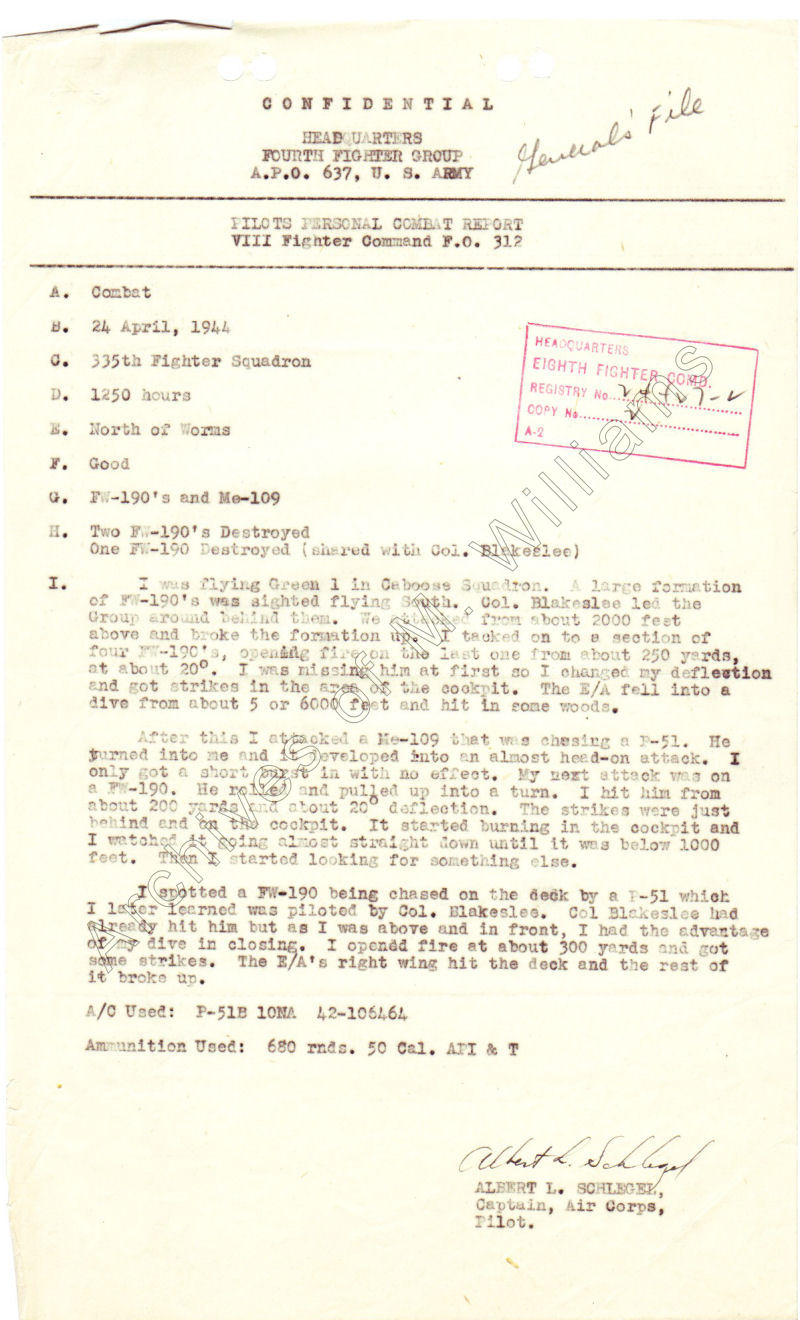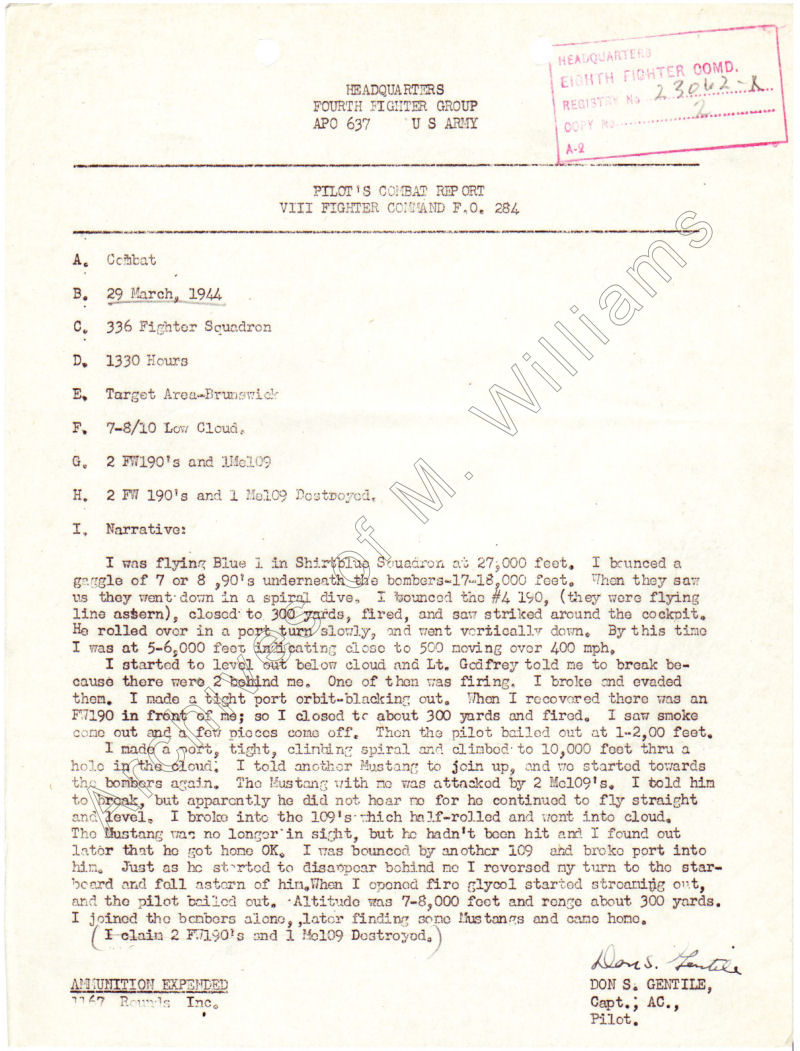
 |
|
|
|
#1
|
||||
|
||||
|
I think 0,50 cal are not undermodelled but i think pilot health is too good in game. Mostly attack from 0,50 cal from six o clock should heavy wounded or just killed pilot. No WW2 fighter have armour plate which could hold 0,50 bullet. In game you could shoting from 0,50 cal to e.x. Fw190 or 109 from six o clock and PK happend very rare. YOu could PK only from angle- deflection shoting in canopy. In WW2 P-51 and P-47 very often wounded or killed german pilots with such rear attacks. In game shoting from six o clock position is just wasting ammo should wounded or killed pilot but these doesn't happend :/
|
|
#2
|
||||
|
||||
|
Not that I really want to fuel another .50 caliber discussion (that has raged for almost a decade on the Zoo), but while waiting for a "constant develompment update" every thing is allowed
I found an interesting text regarding the armor protection of fighters during world war 2: http://www.geocities.com/CapeCanaver...n/fgun-ar.html An exerpt about penetration from .50: "How effective was the armour? It's thickness varied from 8 mm to about 13 mm. The armour was certainly effective against rifle-calibre machineguns, but these weapons were increasingly replaced by far more powerful medium-calibre machineguns or by cannon. The American .50 AP M2 round, a projectile with a high muzzle velocity, was expected to penetrate 1 inch (24.5 mm) at 100 yards (91 mm) and the AP-I M8 round still 7/8 inch. However, such armour penetration figures are traditionally measured against a homogeneous "standard" plate, while the armour plate fitted to aircraft would be face-hardened plate of good quality, to achieve maximal protection for minimal weight. Also important was that before it could hit the armour, the projectile had to pass through the aircraft skin and maybe structural members, which would deflect it or slow it down and was likely to cause tumbling, which would considerable reduce armour penetration. In this way relatively thin plates could greatly increase the protection. Equipment in the aft fuselage could be carefully arrange so that the bullet would have to pass it first, before it could hit the pilot. Finally, typical firing distances were of the order of 300 yards. Most airforces seem to have felt that the armour of their fighters offered substantial protection against .50 and even 20 mm rounds." /Mazex Last edited by mazex; 04-29-2008 at 08:33 PM. |
|
#3
|
|||
|
|||
|
There have been like over 10 zillion discussions over on at the zoo regarding the .50s.
Here is the deal in short. The .50s hit great and they do quite a bit of damage period. The challenge with them is their accuracy in the game. Wheather it's right or wrong it really doesn't matter but the fact is they aren't very accurate far out. Set your convergence <200 meters and don't shoot until you are well with in that range. The 50s hit quite nice. |
|
#4
|
||||
|
||||
|
Quote:
Although I disagree about convergence since with using P-51 as a classic high speed BnZ machine, I like my conv to be higher but not much higher. But this is a personal preference anyway... someone may enjoy and do better with one conv someone else with another... it's one of those random things in game And yes .50s indeed hit very, very hard. |
|
#5
|
|||
|
|||
|
Salute
I think it is important to understand that 90% of a WWII fighter aircraft was completely unarmoured. 90% of it was simply a light framework of aluminum, covered with thin aluminum sheet. This offered minimal protection against bullets. Most aircraft armour was designed to protect the pilot or fuel tanks. The limited areas which were armoured normally was as follows: Cockpit (Pilot) armour a) a thick glass plate served as a front windshield, normally around 50mm thick, this was only effective against gunfire from directly ahead against rifle calibre bullets, and could be penetrated at medium and short ranges by .50 cals. The side cockpit glass, (usually plexiglass) was completely unarmoured. b) the pilot's seat, back and headrest was hardened steel, normally around 8mm thick, thicker in aircraft such as the P-47, proof against light MG fire, but not proof against .50 calibre or higher. The seat offered protection from gunfire from directly behind and below, but not against shots from the side or above. In some Soviet aircraft, the headrest was replaced with a thick bullet proof glass shield to allow for better visibility to the rear. But this glass shield was usually not as effective as steel for protection. Gas tanks a) Gas tanks were constructed of thin sheet metal. With the exception of certain early war fighters, primarily Japanese, most gas tanks had an inner bladder, the construction of which comprised two layers of rubber, with a liquid rubber substance between. When a bullet penetrated the gas tank bladder, the liquid rubber would ooze out into the hole and seal it. Only small holes could be sealed, larger ones could not. A tank hit by a 20mm round or multiple .50 calibre rounds would not seal. Since the many bullets were inciendary, and the gases in partially empty tanks were extremely prone to exploding on contact with flame or sparks, some tanks also had anti-fire systems which involved the replacement of the gasoline fumes in the tank with other inert gases, not prone to exploding. Again, it didn't really matter when a big enough hole was made in the tank, the leaking gas was extremely flammable. The standard .50 calibre round was Armour Piercing Inciendary, (the tip being comprised of phosphorus, which ignites on contact with oxygen, ie. when exposed to air) so when hit by these, fire was a huge possibility. Self sealing tanks are not really armour, they are just a passive protection. Tanks located in the wings of aircraft had no additional armour, but tanks in the fuselage of aircraft such as the FW-190 or P-47 often had additional thin, steel plates protecting them. These were not proof against .50 calibre or larger rounds. Aircraft such as the FW-190 and P-47 which used air cooled engines often had armouring around the oil coolers, (the oil coolers were smaller than radiators, and could be more easily protected) if you look at the picture of the FW-190 below, you can see the oil cooler, and the outer cowling ring around it was armoured face hardened steel which offered some protection to the side and rear. (but not to the front)  Radiators had no armour and were extremely vulnerable. Some of the later model FW-190's used on the 'Sturmbock' Staffels were modified with additional armour plates on the sides of the cockpit below the glass, as well as a thicker windscreen and a heavier ring around the oil cooler at the front of the engine. None of these modified 190's is represented in the game, we have the normally armoured 190's. Again, the areas above which I have mentioned are a small proportion of the overall aircraft, 90% of which is completely unprotected. Anyone who has been in the army or reserves, and who has fired a high velocity large calibre round understands how powerful even a so called 'smaller' weapon such as a .50 calibre is. At 200 yards, the normal distance for air combat in WWII, a metal jacketed .50 calibre round will go through multiple cement blocks. Light aluminum is completely vulnerable to such firepower, the skin and framing of an aircraft would be penetrated easily. A accurated targeted burst would tear apart a wing structure easily. Even steel jacketed light MG rounds are not to be dismissed when directed against the unarmoured sections of a fighter aircraft. Again, anyone who has fired a standard NATO 7.62mm load LMG will understand that this type of round will go through the wall of a house, and would quite easily pentrate aluminum sheet and the lighter wing structures. Overall, I think Oleg has modelled this game on the lenient side, to allow player aircraft to survive gunfire which would do considerably more damage to the real life thing. RE. Badatflyski comments: Post the entire test please, not just the cherry picked section so we understand exactly where the firing aircraft was located, the range the fire happened at, etc. etc. Of course, if the firing aircraft is at long range, and directly behind, the likelyhood of damage is going to be reduced. However, at normal combat ranges the .50 calibre was more than effective, including against 190's. Please note the reports below, re. .50 cals and 190 pilot protection.    All reports courtesy Mike Williams. His site is located here: http://www.spitfireperformance.com/spittest.html It includes not just information re. Spitfires, but also many other aircraft, as well as many air to air combat reports. Also see his WWII Aircraft performance site here: http://www.wwiiaircraftperformance.org/ Last edited by *Buzzsaw*; 04-29-2008 at 10:39 PM. |
|
#6
|
||||
|
||||
|
Not to mention the effect of the .50 on Tiger tanks. Also “claimed” ; off course!
Viking |
|
#7
|
|||
|
|||
|
Quote:
More observations of 'polite' Germans, this time by P-47 pilots:    Hundreds more reports, all courtesy Mike Williams sites: http://www.wwiiaircraftperformance.o...r-reports.html http://www.wwiiaircraftperformance.o...t-reports.html Note that all these reports were classified, not available for publication till the late '50's or '60's, were not released at all during the war, so obviously were not written for propaganda purposes, but simply as combat reports. Last edited by *Buzzsaw*; 04-30-2008 at 01:08 AM. |
|
#8
|
|||
|
|||
|
He's just saying that you can't use pilot acounts as proof.
|
|
#9
|
|||
|
|||
|
Salute Kira
Well, he's wrong. The USAAF, RAF, Luftwaffe, VVS, Regia Aeronautica, and Imperial Japanese Army and Navy all used pilots reports as the basis of awarding kills. The USAAF and RAF also had the benefit of guncam footage to back those reports up. Pilots from all sides overclaimed during the war but pilot reports were still the best source for accurate assessment of enemy losses. There are over 300 pilots reports in the links I gave: http://www.wwiiaircraftperformance.o...r-reports.html http://www.wwiiaircraftperformance.o...t-reports.html If you take the time to read them, you might come to the understanding that there is a clear consistency in the reporting. No doubt some of the reports might be optimistic, but to suggest that all of them are false or unreliable is clearly nonsense, especially considering most of them were backed up with guncam footage, and confirmation from wingmen. They all indicate the effectiveness of the .50 calibre. Last edited by *Buzzsaw*; 04-30-2008 at 01:58 AM. |
|
#10
|
|||
|
|||
|
.50's either preform miracles or end up making you wish you had cannons as your victim slowly coaxes his crate home. An example happened to me not to long ago. I was in a P-51D when a FW-190 bounced me. The Focke-Wolf pilot came out of the dive and pulled into a screaming near vertical climb. He was about 450m away from my gunsight when I fired a short burst in desperation. Luck would have it that he lost a wing. For any plane, the trick is convergence. Also, you can try shoot in a way that your bullets will slice through like a buzzsaw (enemy is flying level, you fly with 90 degree bank). A big plus is that you got more ammo.
|
 |
| Thread Tools | |
| Display Modes | |
|
|